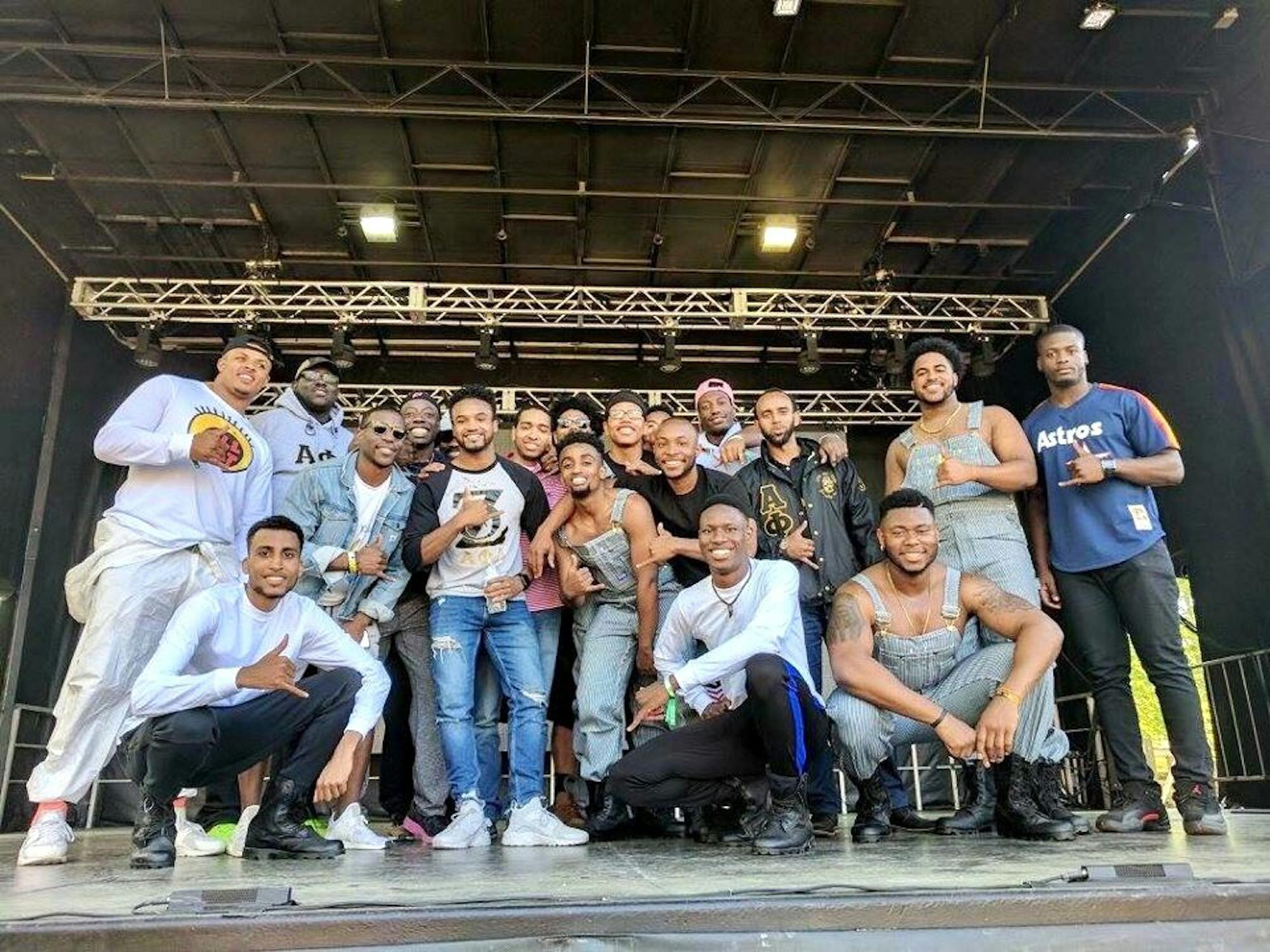This weekend, Alpha Phi Alpha put on the annual Green Key step show. For some Dartmouth students, this performance was just another event in a jumble of activities planned for Green Key weekend. But it was a lot more than that — it was an expression of community, a method of communication and a continuation of a tradition older than Dartmouth itself.
Stepping is a highly technical dance involving stomping, slapping and chanting. The dancer’s entire body is used as an instrument, uniting visual, rhythmic and vocal elements. According to Mariah Reese ’17, the president of Alpha Kappa Alpha, stepping is multidimensional.
“There’s a narrative, which is in of itself a performance,” she said.
The goal, according to Aaron Cheese ’18, president of Alpha Phi Alpha, is perfect unity.
“You want to make it sound like it is one person stepping,” he said.
Strolling is similar to stepping but is usually paired with music. Like stepping, it is often a demonstration of pride.
“You’re in a line together,” Reese said. “Usually there are signs of symbols that are characteristic of our organization. [It] has historical relevance, as far as black women defining our own standard of beauty. It’s all about moving forward.”
These dances, along with calling, a vocal performance involving call-and-response reminiscent of African-American church services, have a rich history. In fact, they connect back to centuries-old African tribal dances.
Traditionally, song and dance have been used by marginalized black communities to demonstrate solidarity. During the era of slavery, slaves would communicate in the fields through song. In South Africa, miners working under horrible conditions would similarly communicate through dancing. They were forced to wear large rubber boots, colloquially referred to as “gumboots,” and were not allowed to speak. So instead, they danced, using their heavy boots to create a steady rhythm.
This “gumboot dance” evolved into modern-day stepping, the origins of which trace back to Howard University in the 1920s. Throughout history, stepping has served as an affirmation of black culture and a means of challenging oppression. For example, a “resistance step” evolved during the South African Apartheid in the 1980s.
How does a dance serve to challenge oppression?
According to psychologists and sociologists, there is tremendous power in synchronous group activity, such as stepping, strolling or chanting, because performing in unison is associated with group bonding. One explanatory theory championed by Emile Durkheim, dubbed “collective effervescence,” states that such activity results in an outlay of positive emotions which causes individuals to increasingly identify with the group in question.
Psychologists at Stanford University offer an alternate theory. They conducted a study in which participants engaged in synchronous group activity and then took a “weak link” test, which measures cooperative behavior. The experimental group chose to act more cooperatively than did the control group. In a follow-up study, they had participants play a public goods game in which they could choose to keep a given amount of money for themselves or give a portion of it to the group. Participants in the experimental group chose to give a majority of their allotted dollars to the group, and as a result, everyone in the group was better off.
This latter point is key to understanding the appeal of synchronous performance: cooperative behavior and a group-oriented mindset facilitate survival. The rise of political “bubbles” is evidence enough that humans drift towards cohesive, often homogenous groups. The world feels safer with a support network.
Jon Scott ’19 said he has found a support network in Alpha Phi Alpha, one of the two “Divine Nine” Black Greek Letter Organizations on Dartmouth’s campus.
“I think [being black at Dartmouth] is something that you definitely notice, some people more than others,” Scott said. “You do realize that some places are almost entirely white. It’s a little uncomfortable at times. There’s a culture difference that’s not always intentional. As a minority here in general, you have to look for places that you feel comfortable.”
This support network extends beyond Dartmouth; alumni of BGLOs continue to stay in touch with each other and with current chapters. Dartmouth has two active BGLO chapters: Alpha Phi Alpha fraternity and Alpha Kappa Alpha sorority.
“I’ve been able to foster bonds, even with the people who graduated … our GroupMe is definitely active for our chapter,” Reese said. “We have one that has alumni. They’re always open for us to reach out for them and ask for guidance.”
Reese’s mother is an AKA as well. Scott’s father and Cheese’s father and grandfather are Alphas.
“The point of becoming an Alpha is that you are an Alpha for life and even beyond that,” Cheese said. “We had a bunch of alumni come up this weekend.”
Scott discussed the perks of being part of a national organization.
“You can have Alphas who you’ve never met in your entire life, and you’ll just be friends and talk,” he said. “There’s almost always someone you can call in any city and they’ll be willing to help.”
Former AKAs include Rosa Parks and Maya Angelou, and former Alphas include Martin Luther King Jr. and W.E.B. Du Bois. Both organizations have long served as manifestations of Black pride and vehicles for activism.
Just as Alpha Kappa Alpha and Alpha Phi Alpha are more than just organizations students can join for three years, the Green Key step show was far more than just a performance. Cheese emphasized that stepping is part of a much broader historical context.
“Stepping is part of a performance that we, as a Black Greek Letter Organization do, but our place and our role in black America and society as a whole is much larger than that,” he said. “It runs much deeper than just what’s shown on stage.”




